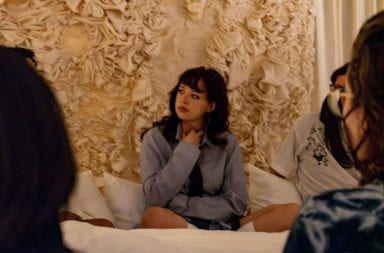Dirt often goes unnoticed and might even be regarded as nature’s invisible element. But one Ohio State professor and her students are trying to change that.
Knowlton Hall’s Banvard Gallery welcomed a new exhibition on Wednesday titled “Columbus Dirt: Illuminating the Invisible.” The showcase, headed by associate professor in landscape architecture Paula Meijerink, aims to uncover the potential of Earth’s unseen element: soil.
“We wanted to make the soil visible,” Meijerink said. “To see the richness of soils here in Columbus or elsewhere. It’s an experiential benefit, I think.”
The exhibition’s main attraction, the “Novel Wall” or “Dirt Wall,” is a concrete-like structure made entirely of soil from Ohio State’s Waterman Farm, sand and water that was compressed. Students in Meijerink’s independent study course worked on the project for more than a month, since the exhibition was born out of the professor’s Autumn Semester seminar project titled “Scarlet Jungle” in 2017.
Last semester’s project was an attempt to grow plants out of concrete, said Clara Young, a fifth-year in landscape architecture. This semester, however, was focused on replacing that concrete with actual life sustaining materials.
Construction of the “Dirt Wall” was no easy feat, said Paul Maginnity, a graduate student in landscape architecture. It took two to three weeks of manual labor to construct the wall, by compacting nearly 2 tons of dirt.
“It is a great workout, I will say that,” Maginnity said. “But it is amazing to think that we did that just by blunt force. When you touch it, it feels like a solid block of concrete.”
Meijerink said the wall is an example of what could be if concrete was replaced with organic, sustainable materials. The project envisions dirt-constructed highway barriers that have the potential to grow living things out of them and provide a new ecosystems for animals to take refuge in.
“There’s also a sustainability benefit because we can build things with local material rather than getting things from far away,” she said. “We can just build with the soil that’s right there.”
In addition to the “Dirt Wall”, the “Columbus Dirt” exhibition displays a large soil chandelier, mini models of what highway dirt barriers could look like, prints of plant life and some examples of student projects from “Scarlet Jungle.”
In the future, Meijerink said that she and her students are interested in trying to implement the dirt wall in a real-world setting, with Waterman Farm being the ideal place to do a trial run.
The exhibition is meant to challenge the way society sees soil and its traditional uses, but Young said she hopes to inform people about the sustainability goals she and her fellow students have.
“I really hope it opens their idea of what landscape architecture is,” Young said. “We are trying to find new ways to make things sustainable and trying to find new way to make things in general.”
“Columbus Dirt: Illuminating the Invisible” is located in Knowlton Hall’s Banvard Gallery and will be on display through March 30. The gallery is open from 9 a.m. to 5 p.m. Monday through Friday. Admission is free.


